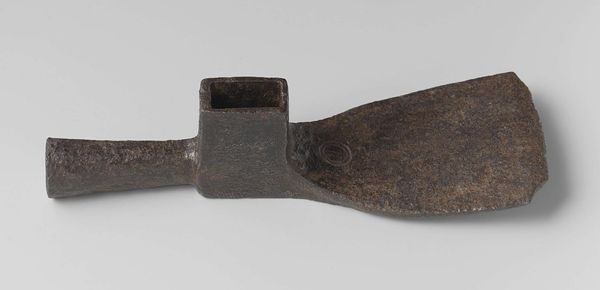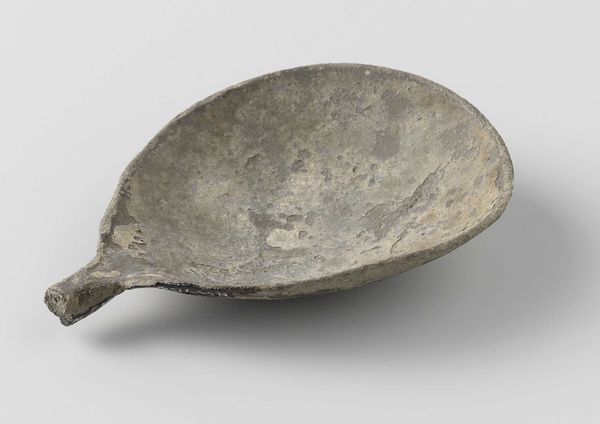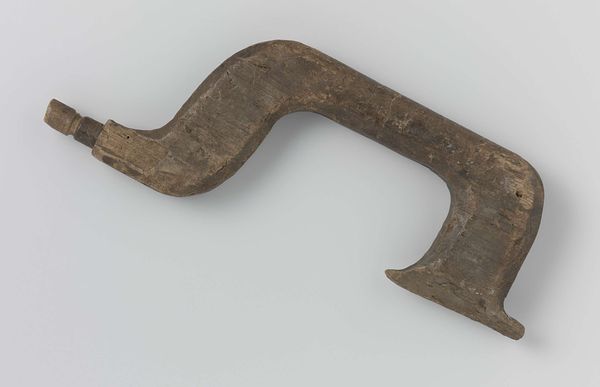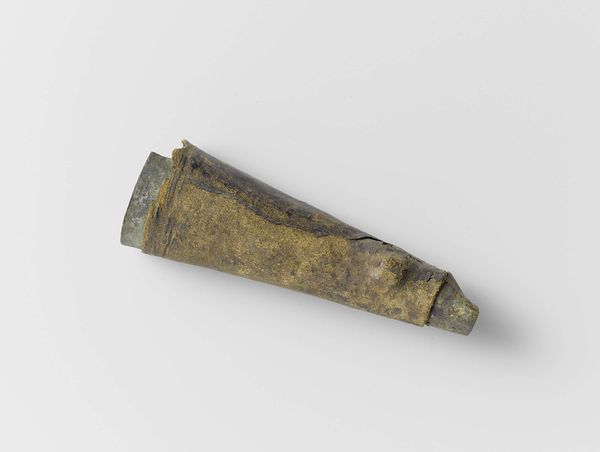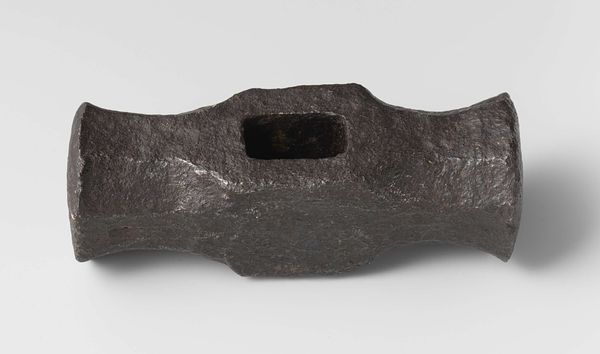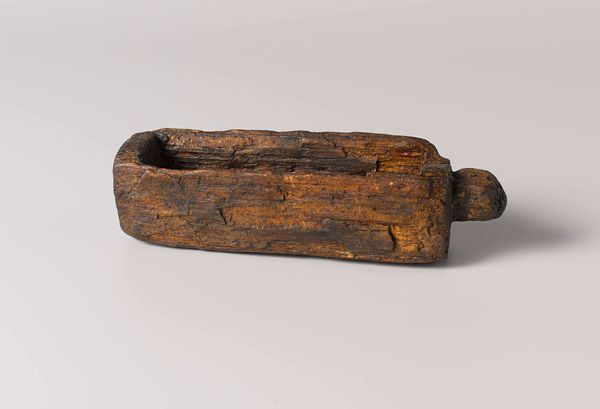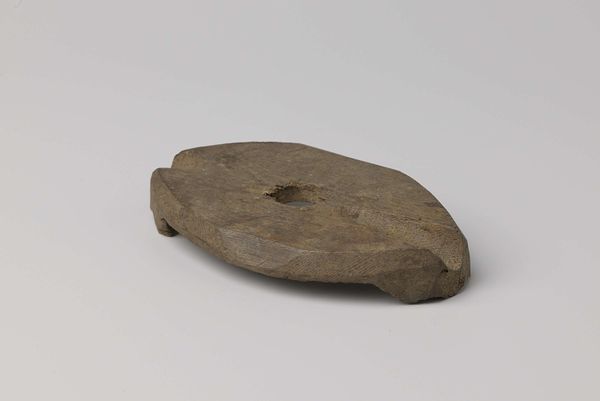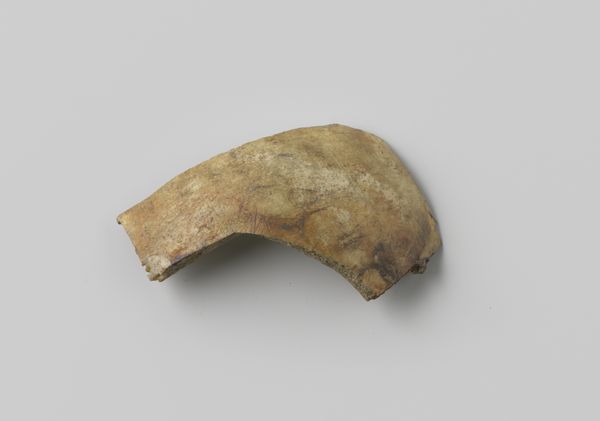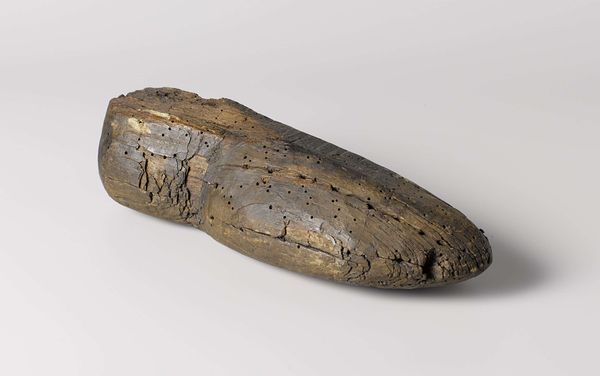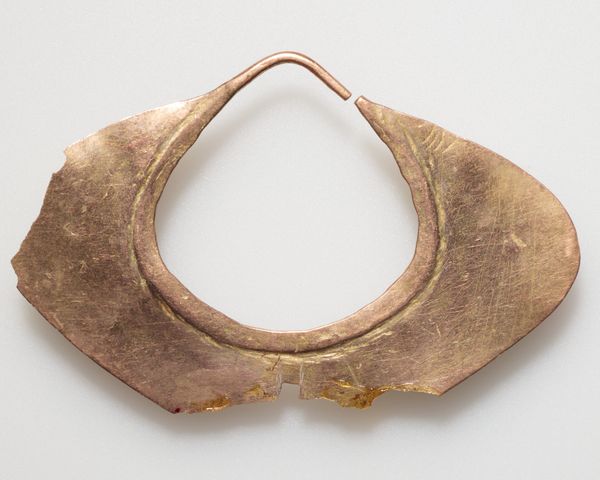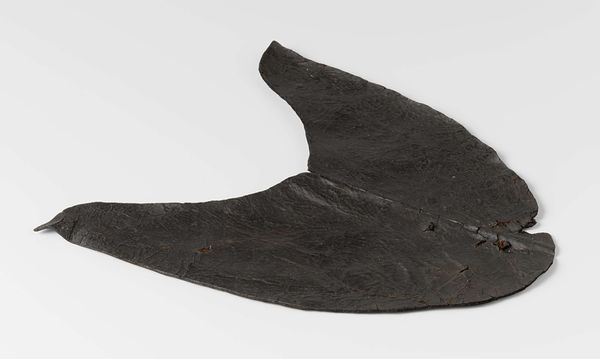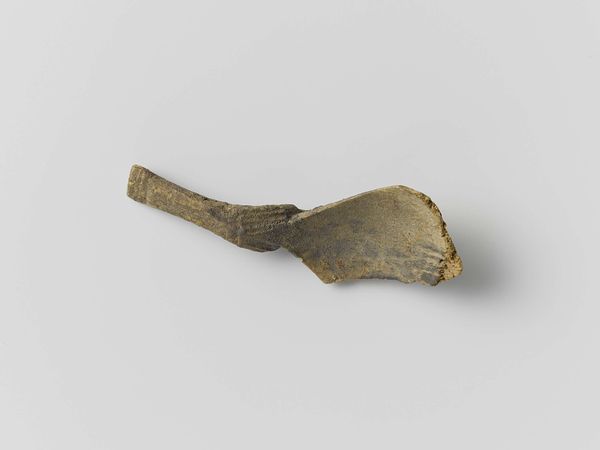
sculpture, wood
#
sculpture
#
11_renaissance
#
geometric
#
sculpture
#
wood
#
history-painting
Dimensions: length 20 cm, width 5 cm, width 9 cm, diameter 2.2 cm
Copyright: Rijks Museum: Open Domain
Curator: This striking wooden object, dating from possibly 1590 to 1597, is identified as a "Clock and gunpowder horn" and resides here at the Rijksmuseum. Editor: My first thought is that it looks rather austere, almost weathered. It gives the impression of having silently witnessed quite a lot! I am intrigued about this fusion between measuring time and, quite literally, explosive action! Curator: Indeed. It is an intriguing piece. We believe this gunpowder horn and the clock it likely accompanied highlight an interesting intersection of military readiness and emerging technologies. Consider that timepieces were still somewhat novel and not widely available. Editor: So this clock was a sort of prestige item, intertwined with war? It’s a bit like those fancy watches generals wear in movies – it whispers power, and access! Curator: Precisely. Its creation underscores not just the advancement of weapon technologies but also suggests a certain aspiration within military circles. It’s all about controlled efficiency. The measurement of time, coordinated actions. Editor: Control. That is the crux of this whole horn. Gunpowder, itself, needs mastering, contained. But putting the concept side-by-side with that of marking time—fascinating! How the desire to organize things really does extend into every niche of experience! Curator: Furthermore, objects such as this can reflect larger socio-political concerns of their period. The ongoing European conflicts required an efficient means for not only resource gathering but for troop coordination, strategy and above all, supply of weaponry. The piece showcases those values, literally. Editor: Thinking about gunpowder stored in wood… the horn itself looks remarkably sturdy. Was it standard or commonplace? Also what stories it would tell could it talk about who carried it…the hands that wielded the power! Curator: Examples of wooden powder horns survive within a certain frequency within collections internationally and yes, imagine where this object might have travelled! In considering how societies invested in art-making – either as propaganda or purely for leisure and beauty – objects related to technology reveal perhaps the deeper desires. Editor: This blending of technology and artistry provides an entry point into that complex era. Curator: Indeed, and that intersection remains so compelling still today.
Comments
rijksmuseum about 2 years ago
⋮
This clock was originally intended as merchandise for sale or as a gift. It was hung up in the ‘Save House’ as the only means of providing a sense of time during the long, polar nights. On 3 December 1596, it froze. Barentsz and Van Heemskerck shoved a parting letter into the gunpowder horn when they left. Three centuries later, the horn was rediscovered with the letter still inside. The letter cannot be exhibited due to its fragility.
Join the conversation
Join millions of artists and users on Artera today and experience the ultimate creative platform.

